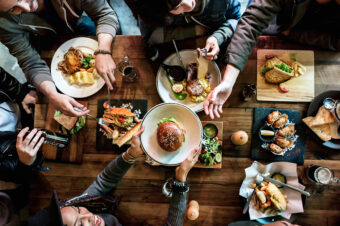As a regular visitor to London and frequent user of the city’s underground, I love the fact you can access and pay for travel on the tube with a contactless credit or debit card, writes GS managing director Niels Nielsen. All you have to do is walk up to the barrier, place your plastic on the censor and bingo, you’re free to travel across the capital in a matter of seconds.
Contrast this to Manchester; when you’re travelling on our tram system you have to buy a ticket at a machine on the station platform with either cash or a card. This process can take a couple of minutes, very frustrating when a tram is racing around the corner and next one is is a quarter of an hour.
Travelling easier by adopting and using technology effectively sprang to my mind when I read Glynn Davis’s Propel Friday Opinion piece (published 31 March 2017) about the pointlessness of ubiquitous technology unless it impacts on the customer experience.

Now I appreciate Glynn is a commentator on retail trends and likes to court a certain amount of controversy. However, in all my time working in EPOS, I’ve never witnessed technology being used in the hospitality sector purely for its own sake.
Glynn highlights taking table orders with tablets, pre-ordering with smartphones and using analytics from the till to improve operational efficiency as other examples of the ubiquitous nature of technology. Obviously, I can fully understand Glynn’s point of view that as a customer he would rather make a booking by phone rather than online via a website.
All of us have our own way of how we prefer to do things and that is the point: good hospitality operators, and their EPOS and technology providers, have to appeal across the board to their customers and embrace rather than ignore the numerous different communication and technology platforms available to us.

I might not personally visit Facebook that often but millions use it everyday. Therefore it would be counter productive not to offer online bookings for a restaurant or brand on the site. Seamless integration with Facebook is one of the big selling points of our MAX Bookings table reservation software.
Similarly, logging onto Twitter and tweeting how I feel first thing in the morning is not my number one priority. For others, it is their primary means of getting their message out to the world, no matter what the time of day or night. You only have to look across the Atlantic to see how USA President Donald Trump uses Twitter to dominate the news agenda and by-pass traditional broadcast and print media.
Our collective objective as a sector is to make buying decisions as easy as possible rather than erect barriers. Consumers should be given as much choice as possible so they can select their own purchasing pathway. If you’re taking advanced bookings for your restaurant, then give people multiple options: walking in off the street to book in person, calling on the phone like Glynn prefers, e-mailing or reserving a table via your website or your various social media platforms.
How many times have you sat in a pub with your mates and discussed how the buying process was like tackling an obstacle course? The decision was made but you had to carry on jumping through hoops to complete the purchase?

Obviously, I am bias as a technology business owner but I’ve never sat in a briefing session with a hospitality operator and talked about spending money or developing an app without having clearly identified strategic and operational objectives.
After all, technology is a substantial investment in terms of money, time and resources and the vast majority of hospitality operators are too shrewd to waste their energies and cash unless they know they can get a tangible, measurable return.
When we speak to operators about bespoke software development or integrating apps to our EPOS solutions, we chat about the challenges they want to overcome. Together we work out the best way of tackling their issues through embedding procedures and processes around their technology systems.
Later this year, for example, we’re launching a staff and labour product called MAX HR. One of the benefits of the module is predictive planning functionality. This allows operators to use the MAX HR app to match the right ratio of staff to customers to avoid short or over staffing.

This is great news for operators and how they manage and measure their labour costs and schedules. But just as importantly, it is equally great news for the end user customer who will get served quickly by waiters and waitresses who are fully able to engage with them rather than being rushed off their feet.
There are numerous other examples where technology helps rather than hinders. For instance, loyalty campaigns, gift cards and online shopping are just three on the tip of my tongue.
Although to be fair to Glynn, he is also talking about hospitality operators being the best they can – as is the case with his favourite Passion e Tradizione. I feel the same way about San Carlo and Almost Famous in Manchester’s city centre, just two of our award-wining clients who provide a guest experience that is second to none by carefully balancing personal service and technology.
Here, I agree with him 100%, not just for restaurants and hospitality operators but also for technology businesses like GS. We are all looking to engage with business-to-business users and the public alike. And we are all striving to be the best we possibly can. Technology definitely has a key role to play if we are to achieve that goal.







